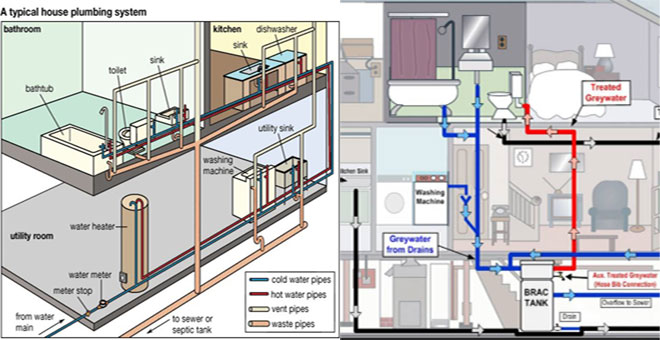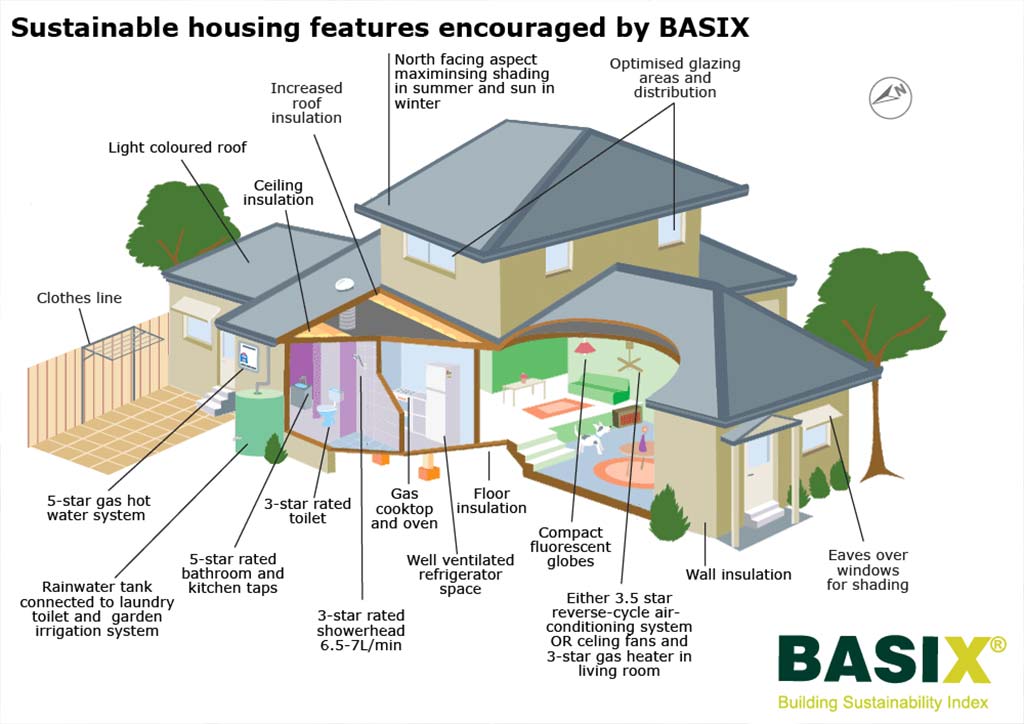The Complete Look at Your Home's Plumbing System Anatomy
The Complete Look at Your Home's Plumbing System Anatomy
Blog Article
Were you hunting for selective information on Anatomy of a House: Understanding the Components?

Recognizing exactly how your home's plumbing system functions is vital for each property owner. From supplying clean water for drinking, cooking, and showering to securely getting rid of wastewater, a properly maintained plumbing system is critical for your family members's wellness and convenience. In this detailed guide, we'll explore the intricate network that comprises your home's pipes and offer suggestions on maintenance, upgrades, and handling usual problems.
Introduction
Your home's plumbing system is greater than simply a network of pipes; it's an intricate system that guarantees you have access to tidy water and effective wastewater removal. Knowing its parts and exactly how they work together can assist you prevent pricey repair services and guarantee everything runs efficiently.
Fundamental Parts of a Plumbing System
Pipelines and Tubing
At the heart of your pipes system are the pipes and tubes that bring water throughout your home. These can be made of various products such as copper, PVC, or PEX, each with its advantages in terms of longevity and cost-effectiveness.
Fixtures: Sinks, Toilets, Showers, and so on.
Fixtures like sinks, toilets, showers, and bathtubs are where water is utilized in your house. Comprehending exactly how these fixtures connect to the plumbing system aids in detecting troubles and intending upgrades.
Shutoffs and Shut-off Factors
Shutoffs control the circulation of water in your pipes system. Shut-off valves are crucial throughout emergency situations or when you need to make repair services, enabling you to separate parts of the system without interfering with water flow to the entire residence.
Water Supply System
Main Water Line
The primary water line connects your home to the local water system or a personal well. It's where water enters your home and is dispersed to different components.
Water Meter and Pressure Regulatory Authority
The water meter actions your water use, while a stress regulator ensures that water streams at a risk-free pressure throughout your home's pipes system, avoiding damages to pipes and components.
Cold Water vs. Hot Water Lines
Recognizing the distinction between cold water lines, which provide water straight from the major, and hot water lines, which bring warmed water from the water heater, helps in repairing and preparing for upgrades.
Water drainage System
Drain Pipeline and Traps
Drain pipelines lug wastewater far from sinks, showers, and toilets to the drain or septic system. Catches avoid drain gases from entering your home and additionally catch debris that might trigger obstructions.
Air flow Pipes
Ventilation pipes enable air right into the drainage system, stopping suction that might reduce drainage and cause traps to empty. Correct ventilation is necessary for keeping the integrity of your pipes system.
Value of Appropriate Drainage
Guaranteeing proper drain prevents backups and water damages. Regularly cleansing drains pipes and keeping catches can protect against costly repairs and extend the life of your plumbing system.
Water Heating System
Types of Water Heaters
Water heaters can be tankless or traditional tank-style. Tankless heaters heat water as needed, while containers save warmed water for instant use.
Exactly How Water Heaters Link to the Plumbing System
Recognizing exactly how water heaters link to both the cold water supply and hot water distribution lines helps in detecting concerns like inadequate hot water or leaks.
Upkeep Tips for Water Heaters
Consistently purging your hot water heater to eliminate sediment, examining the temperature level settings, and checking for leaks can extend its lifespan and boost energy efficiency.
Common Pipes Concerns
Leaks and Their Causes
Leakages can happen because of maturing pipelines, loose fittings, or high water stress. Attending to leaks promptly protects against water damage and mold and mildew growth.
Blockages and Blockages
Blockages in drains and bathrooms are frequently triggered by purging non-flushable products or a buildup of oil and hair. Utilizing drainpipe screens and bearing in mind what drops your drains pipes can avoid obstructions.
Indications of Pipes Issues to Look For
Low tide stress, sluggish drains, foul odors, or uncommonly high water bills are indications of possible plumbing issues that should be addressed without delay.
Plumbing Upkeep Tips
Routine Examinations and Checks
Arrange yearly plumbing assessments to catch problems early. Try to find indications of leakages, rust, or mineral build-up in taps and showerheads.
DIY Upkeep Tasks
Straightforward tasks like cleaning faucet aerators, checking for toilet leakages using color tablet computers, or protecting revealed pipes in chilly environments can avoid significant plumbing problems.
When to Call a Specialist Plumbing Technician
Know when a pipes issue needs specialist competence. Trying complicated fixings without proper understanding can bring about more damages and greater repair work expenses.
Updating Your Pipes System
Reasons for Upgrading
Upgrading to water-efficient components or changing old pipes can improve water high quality, lower water costs, and increase the value of your home.
Modern Pipes Technologies and Their Advantages
Discover modern technologies like smart leak detectors, water-saving toilets, and energy-efficient water heaters that can save money and minimize ecological influence.
Price Factors To Consider and ROI
Calculate the upfront expenses versus long-lasting cost savings when thinking about pipes upgrades. Several upgrades pay for themselves with reduced utility bills and fewer repair work.
Environmental Effect and Conservation
Water-Saving Fixtures and Home Appliances
Mounting low-flow faucets, showerheads, and bathrooms can considerably decrease water use without giving up efficiency.
Tips for Minimizing Water Usage
Basic routines like taking care of leaks without delay, taking much shorter showers, and running complete loads of laundry and recipes can save water and lower your energy expenses.
Eco-Friendly Plumbing Options
Take into consideration lasting plumbing products like bamboo for floor covering, which is durable and environmentally friendly, or recycled glass for countertops.
Emergency Readiness
Steps to Take Throughout a Pipes Emergency
Know where your shut-off shutoffs are located and how to shut off the supply of water in case of a burst pipe or significant leakage.
Value of Having Emergency Situation Calls Handy
Keep get in touch with info for neighborhood plumbers or emergency situation services readily offered for quick response throughout a plumbing crisis.
Do It Yourself Emergency Fixes (When Appropriate).
Short-term repairs like utilizing air duct tape to spot a dripping pipe or putting a pail under a trickling faucet can lessen damage up until a professional plumbing technician arrives.
Verdict.
Comprehending the makeup of your home's plumbing system encourages you to preserve it effectively, conserving time and money on fixings. By following normal maintenance routines and remaining educated regarding contemporary plumbing innovations, you can guarantee your plumbing system runs successfully for many years ahead.
HOW YOUR PLUMBING SYSTEM WORKS
Which Pipes Do What?
Blue lines = fresh water supply entering the building
Red lines = hot water supply entering the building
Grey lines = pipes carrying waste away from the building and venting pipes carrying gases away from the building (through the roof)
YOUR MAIN PLUMBING SYSTEMS
There are two main plumbing systems that support your home s basic plumbing needs one that brings clean water into your home, and one that sends dirty water away from your home. Connected to the toilet, bath, shower, and other faucets in your home, these two systems keep your water flowing in the right directions.
ACCESSING FRESH WATER
Fresh and clean water is brought into your home through the main water supply line . Filtered through one pipe, this water is pressured to flow into the various fixtures in your home at any given time.
This water can be sourced from a well located on your property, a pond or river (mostly cottages), or, as in most cases, from the city s municipal water treatment centre. However, it is important to note that water that is untreated, such as the water siphoned from ponds or rivers, may not be safe to drink. Personal water supplies always need to be treated for hardness and contaminants before consumed.
MUNICIPAL WATER SUPPLIES
Improve taste and odour
Remove sediment
Eliminate hardness
Reduce chlorine
COLD WATER SUPPLY VS. HOT WATER SUPPLY
Cold water flows into your home or building through the service line, which then distributes hot or cold water to your fixtures. This line is most commonly run through a central column that runs floor to floor. Hot water runs in short and straight pipes as the longer the pipeline, the more heat that will be lost in the transfer. Having shorter pipes also allows residents to access hot water more quickly.
WASTE WATER SYSTEM
Your wastewater system is divided into two parts pipes that send wastewater away from your home and venting pipes that send sewer gas away from your home. Sewage water travels through pipes that flush the water and waste towards local sewers that are operated and managed by your city or town. Most sewer systems rely on gravity to move the wastewater to where it needs to go.
The further away from your toilet or sink, the larger wastewater pipes become. This allows for waste to be disposed of from various parts of your home or business at once without pipe blockages. The angle and flow of these pipes are also essential for keeping your waste pipes clear of build up.
https://harrisplumbing.ca/how-your-home-plumbing-system-works/

HOW YOUR PLUMBING SYSTEM WORKS
Which Pipes Do What?
YOUR MAIN PLUMBING SYSTEMS
There are two main plumbing systems that support your home s basic plumbing needs one that brings clean water into your home, and one that sends dirty water away from your home. Connected to the toilet, bath, shower, and other faucets in your home, these two systems keep your water flowing in the right directions.
ACCESSING FRESH WATER
Fresh and clean water is brought into your home through the main water supply line . Filtered through one pipe, this water is pressured to flow into the various fixtures in your home at any given time.
This water can be sourced from a well located on your property, a pond or river (mostly cottages), or, as in most cases, from the city s municipal water treatment centre. However, it is important to note that water that is untreated, such as the water siphoned from ponds or rivers, may not be safe to drink. Personal water supplies always need to be treated for hardness and contaminants before consumed.
MUNICIPAL WATER SUPPLIES
COLD WATER SUPPLY VS. HOT WATER SUPPLY
Cold water flows into your home or building through the service line, which then distributes hot or cold water to your fixtures. This line is most commonly run through a central column that runs floor to floor. Hot water runs in short and straight pipes as the longer the pipeline, the more heat that will be lost in the transfer. Having shorter pipes also allows residents to access hot water more quickly.
WASTE WATER SYSTEM
Your wastewater system is divided into two parts pipes that send wastewater away from your home and venting pipes that send sewer gas away from your home. Sewage water travels through pipes that flush the water and waste towards local sewers that are operated and managed by your city or town. Most sewer systems rely on gravity to move the wastewater to where it needs to go.
The further away from your toilet or sink, the larger wastewater pipes become. This allows for waste to be disposed of from various parts of your home or business at once without pipe blockages. The angle and flow of these pipes are also essential for keeping your waste pipes clear of build up.
https://harrisplumbing.ca/how-your-home-plumbing-system-works/
I was shown that article about The Inner Workings of Your Home's Plumbing from an associate on our other web blog. Enjoyed our piece of writing? Please quickly share it. Let another person check it out. Thanks a bunch for being here. Please visit our blog back soon.
Call Today Report this page